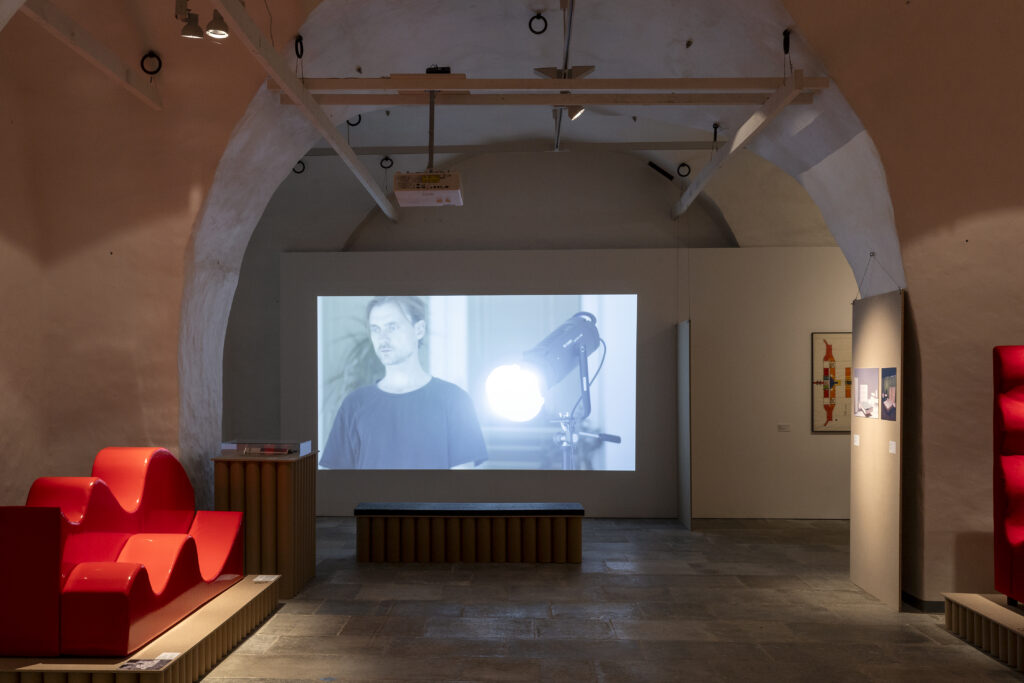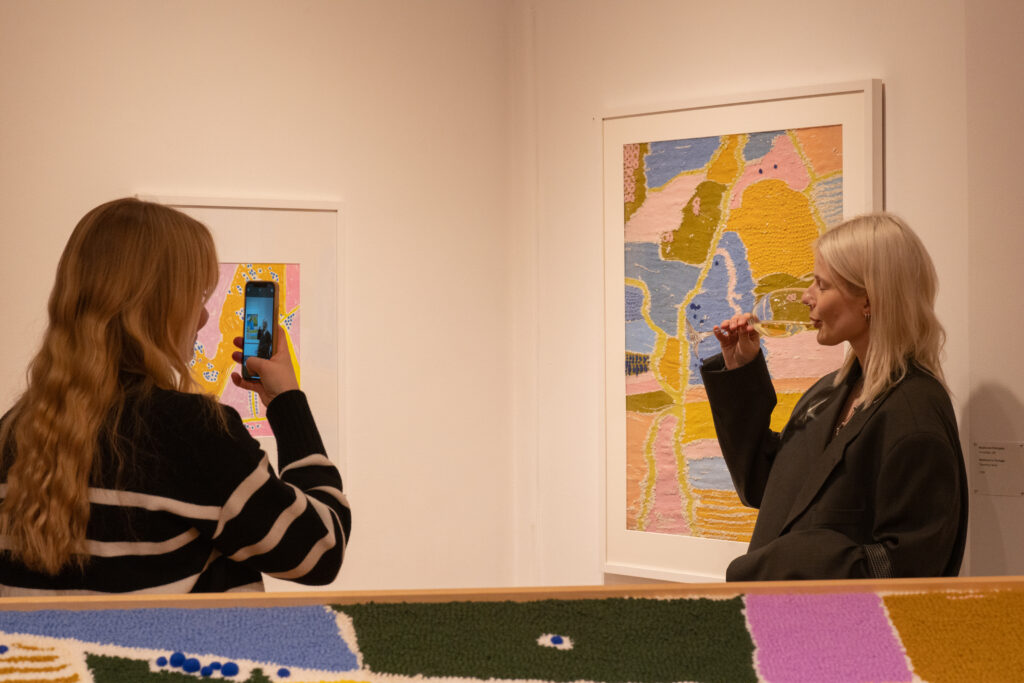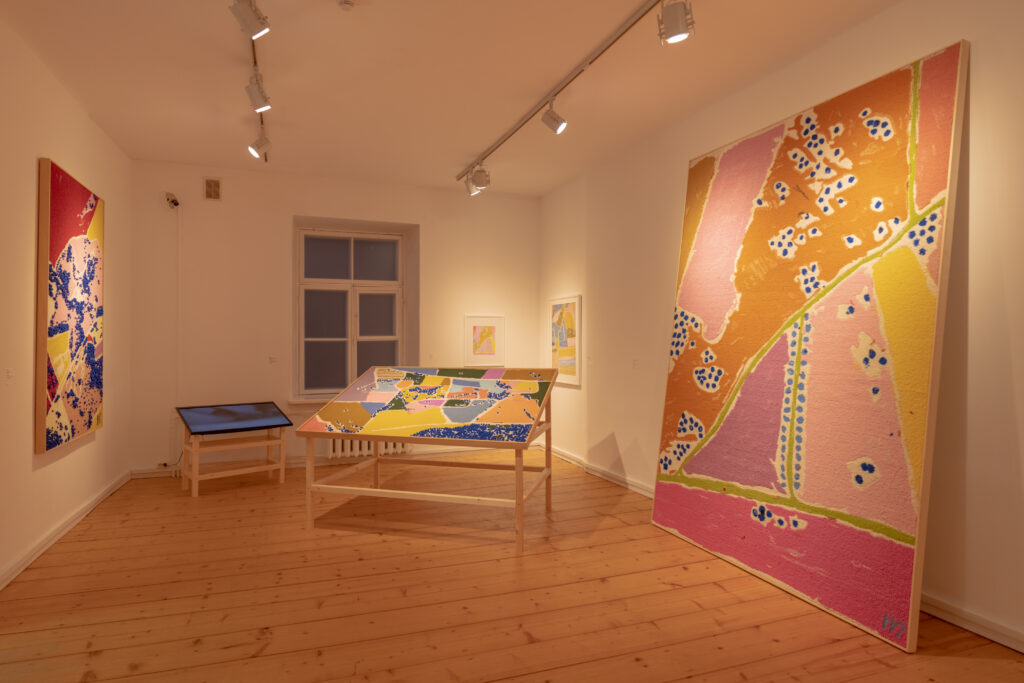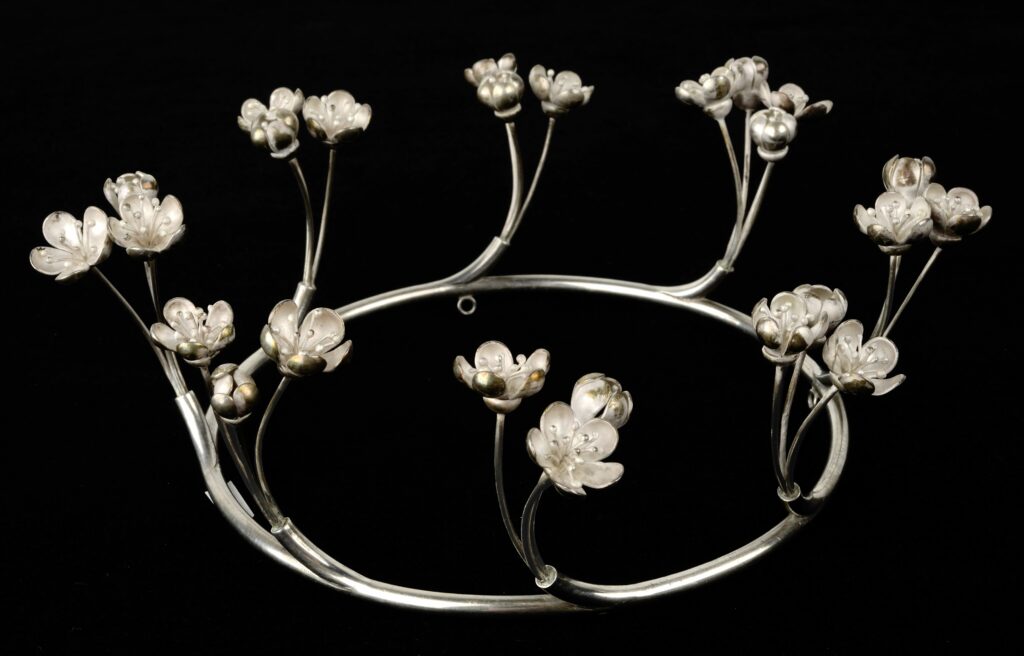Exhibitions and events in the museum in 2024
20.2.2024
Exhibition
In 2024, the Estonian Museum of Applied Art and Design brings visitors six exhibitions and a diverse audience program.
As part of the joint project between the ETDM, the Estonian Health Museum and the History Museum, the exhibition “Uneversum: Rhythms and Spaces”, exploring the times and spaces in which we sleep, is open until 7 April. The exhibition focuses on the fascinating relationship between radical ideas and everyday traditions as they interact with sleeping spaces, environments, and time and timekeeping. The exhibition showcases works from both foreign and Estonian designers that investigate the spaces and times we dedicate to sleep, from approaches dating back over a century to visions of the future. Curator’s tours of the exhibition will take place on 9 March (in Estonian) at 1 pm and 21 March (in English) at 6 pm.

Uneversum: Rhythms and Spaces
Our first new exhibition of the year is “Suuremjault mälëstustes” (Mostly in Memories) by textile and installation artist Maryliis Teinfeldt-Grins, which brings together poetic imagery from the artist’s debut poetry collection “Kivi alla kükakille” (Crouching Under a Stone) and stories of longing rendered in embroidery.
The artist presents us with a series of embroidered landscape memories – places that have taken shape only in the artist’s recollections.
The exhibition is accompanied by an audience programme, which includes an artist’s tour on 25 February and, on 8 March, a punch needle embroidery workshop and a poetry evening. The exhibition will be open until 5 May 2024.



“Suuremjault mälëstustes” (Mostly in Memories) by textile and installation artist Maryliis Teinfeldt-Grins. Photos by Evert Palmets.
At the beginning of May, an exhibition on the Estonian Design Awards competition between 2012 and 2022 takes the place of “Uneversum” in the first-floor hall. Visitors to the exhibition will meet the works and designers recognised and awarded as representing the best of local design over the ten years featured. The showcase provides insight into the history of the awards, their organisation and how they have developed over the years, as well as other aspects of the prestigious competition. The presentation of laureates offers an overview of the selected works and designers, creating a space for discussion between the design industry and the wider public. The exhibition is curated by Sandra Nuut, with the cooperation of the Estonian Design Centre. It will remain open until 6 October 2024.
In the summer, the gallery hosts an overview exhibition of the work of metal artist Leida Ilo. The exhibition presents key pieces from the artist’s oeuvre, as well as works that have not been widely shown before. Ilo is one of only a few artists continually working on reinterpreting the archetypal forms of the wreath and the crown in jewellery and other objects. She shapes metal into grasses, flowers and leaves, skilfully but gently, and leaving no trace of its original rigidity. Her more widely known works include victory wreaths for the popular international flower festivals held in Linnahall in the 1980s and the crown for the 1990 Miss Estonia pageant. Ilo’s most famous work in urban space is undoubtedly the sign-sculpture “Egg”, which was commissioned by the Tallinn Model Poultry Factory in 1978 and is still located in the borough of Loo.

A silver crown by Leida Ilo, 1977.
Starting this September, Jüri Kermik´s exhibition “Suffolk Knot”, created in 2021, will be open for viewing in the museum. Kermik’s project focuses on regionalism in the choice of materials, details and construction of seating furniture. It shines a light on the peculiarities and commonalities of furniture-making traditions in the English region of Suffolk and Estonia. The outcome of the project is a series of objects – including chairs, tables and architectonic sketches – developed through observations, comparative analysis and synthesis.
In October, we open an exhibition introducing the legacy of Bruno Tomberg (1925–2021), a legendary interior designer and the founder of Estonian design education. This exhibition presents the development of Estonian design in the second half of the 20th century, when Tomberg became its tireless advocate. The scope of Tomberg’s activities was exceptionally broad, and now, with the archival material he donated to the museum, we are able to exhibit a significant part of that work for the first time. This retrospective closely scrutinises design education, applied art practice, exhibition and space designs, Tomberg’s own experimental exhibition series “Ruum ja vorm” (Space and Form), and much more.
The exhibition is curated by Kai Lobjakas.
From December to March 2025, we present the work of the socially active textile artist Signe Kivi. Kivi’s busiest creative years were in the 1980s. This was a period of extensive identity-seeking in consumer art, breaking away from the functionality and conformity of good taste that were characteristic of post-war modernism. For Kivi’s generation, stability and the established order were boring.
The focus of the artist’s work at the time was large-scale printed textiles. For the exhibition, the artist will create an environment based on her work, referring to the past while making sense of its starting points, which are still important and relevant today.
Lectures and talks on design
The conversation and lecture series “When is design?” continues, focusing on introducing local design history and contemporary design practices. On 7 March, we talk to artist and designer Kärt Ojavee, whose work combines new technologies with traditional craft techniques. Jüri Kermik will give a lecture on 18 April, and Ruth Huimerind will talk about her work on 9 May.
The lectures and talks are open to all interested parties, and the recordings can be viewed on the museum’s website or its YouTube channel.
Museum lessons for children
This year, we started Design Saturdays for toddlers, where children can discover Estonian consumer art and various materials through playful and creative activities while gaining new knowledge about texture, colour, form and much more.
Throughout the year, we also offer museum lessons for all school levels, which introduce and provide insight into the field of applied art and design. Self-discovery and sharing what we’ve learned with others with the help of prepared tasks play a central role in the museum lessons. More and more, we are thinking about the environment and sustainability.
This spring, we invite 7th, 8th and 9th grade students to participate in the design competition “Notice the Environment – My Smart Solution”, with which the museum invites everyone to take a closer look at the environment around us – at home, at school and between – and to find places and things that inspire us to think about what is possible and what is necessary to bring change for the better.
An exhibition of the best works will open in the Estonian Museum of Applied Art and Design on 10 May. It remain open until autumn. The audience’s favourite work will be announced at the end of the exhibition.
The museum helps domestic design reach an international audience.
But can an exhibition or work ever travel?
In autumn, the exhibition “Still Lifes on National Motifs”, curated by Jaanus Samma, will move to the cultural capital Tartu, where it will open in the Estonian National Museum in September.
An online archive has been compiled from exhibition materials gathered by the specialist network created during last year’s international project “Retrotopia”. The archive, which includes an array of material relating to Estonia, will be made more widely available this year.
Our doors will be open during Museum Night on 18 May, which this time coincides with International Museum Day, too. This theme for the year is “Freedom in the Night”. In the autumn, the museum is certain to host a number of events for Tallinn’s Design Night festival.